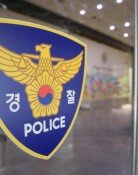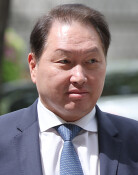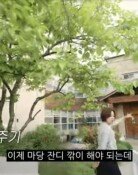The Path They Took and the Path We Should Take
The Path They Took and the Path We Should Take
Posted February. 17, 2007 07:26,
It was a long and winding journey for the three envoys devoted to independence of their home country. Despite their sacrifices, they failed to deliver the mission, and one of them died lonely in the foreign land. One hundred years later, however, it is evident that their passion to declare Joseons independence never died.
This year marks the 100th anniversary of the three representatives attendance to the 1907 World Peace Conference in The Hague, the Netherlands as they were dispatched by Gojong, the 26th King of the Joseon Dynasty, and the first emperor of the Daehan Empire to disclose the illegitimacy of the forced agreement of Japanese colonial rule.
Commemorating their endeavor, Dong-A Ilbo will run an exploration program that traces the path taken by one of the diplomats, Lee Jun, who never returned to Korean soil. The program, dubbed Following the Path of a Patriot, is a great journey that will start in Seoul on June 25 and will go through Vladivostok, Moscow, Berlin, and Brussels to arrive at The Hague on July 13.
In addition, this paper will receive applications from university students planning to visit Europe, including the Dutch city, in March and cover the backpack trip expenses for 500 of them (on a first come, first served basis) as part of a Remembering home under the European sky program. Various other events including an academic symposium and a Korean traditional dance performance are also scheduled at the historic site from July 13 through 15.
In preparation of the events for the centennial anniversary, this paper followed the footsteps of the diplomats, reminiscing their sorrow.
The First Days-
The first stop was Den Haag HS Station, at which the representatives, Lee Jun, Lee Wi-jong, and Lee Sang-seol arrived after a month-long trip. The station, still in operation, was crowded with many people. They arrived on June 25, 10 days after the opening of the peace conference. How frustrated and nervous they must have felt! Walking down a path from the station, I headed downtown to the very street they treaded 100 years ago.
Within a kilometer, the Lee Jun Memorial appeared. It was a delight to see the Taegukgi in front of the building. It was where the De Yong Hotel was located, where the three representatives stayed. The three-story building seemed to be too small for a hotel.
Currently, the second and third floors are dedicated to the patriots. Korean resident Lee Ki-hang and his wife Song Chang-ju bought the building and opened the memorial in 1995 after redecorating it. The memorial, the only site in Europe symbolizing Koreas independence movement, was full of data collected by the couple. On display were eye- catching and precious documents such as the World Peace Conference paper that covered the representatives activities, pamphlets released by the Korean diplomats, and a telegram sent by Japanese envoy Suzuki to his home.
On June 26, 1907, day two of their journey, the three Koreans requested their attendance at the conference only to be told they were not invited and be flatly rejected. The venue of the conference is now being used as a Senate Hall. From afar, its two steeples came in sight. It looks like a small cathedral.
When I went there, the gate was closed tightly. The three could never have opened the door 100 years ago. I imagined them shedding tears in the square in front of the hall. Not to be defeated, the envoys distributed petitions and were finally able to present themselves before the International Journalist Club (IJC) on July 8. The IJC building is still on the canal side as it was a long time ago. The three-story building with an attic is now being used as an office.
With Hope Came Tragedy-
Lee Jun died in the hotel on July 14, a Sunday that coincided with the French Independence Day. The July 17 World Peace Conference paper imparting the news of his lonely death sounded heart-breaking.
His remains were sent home in 1963, after wandering the foreign land for 56 years. His grave is still met with many visitors. On the day I visited, I could see a cluster of fresh white chrysanthemums laid in the entrance of the cemetery and in a vase upon the altar.
gold@donga.com







